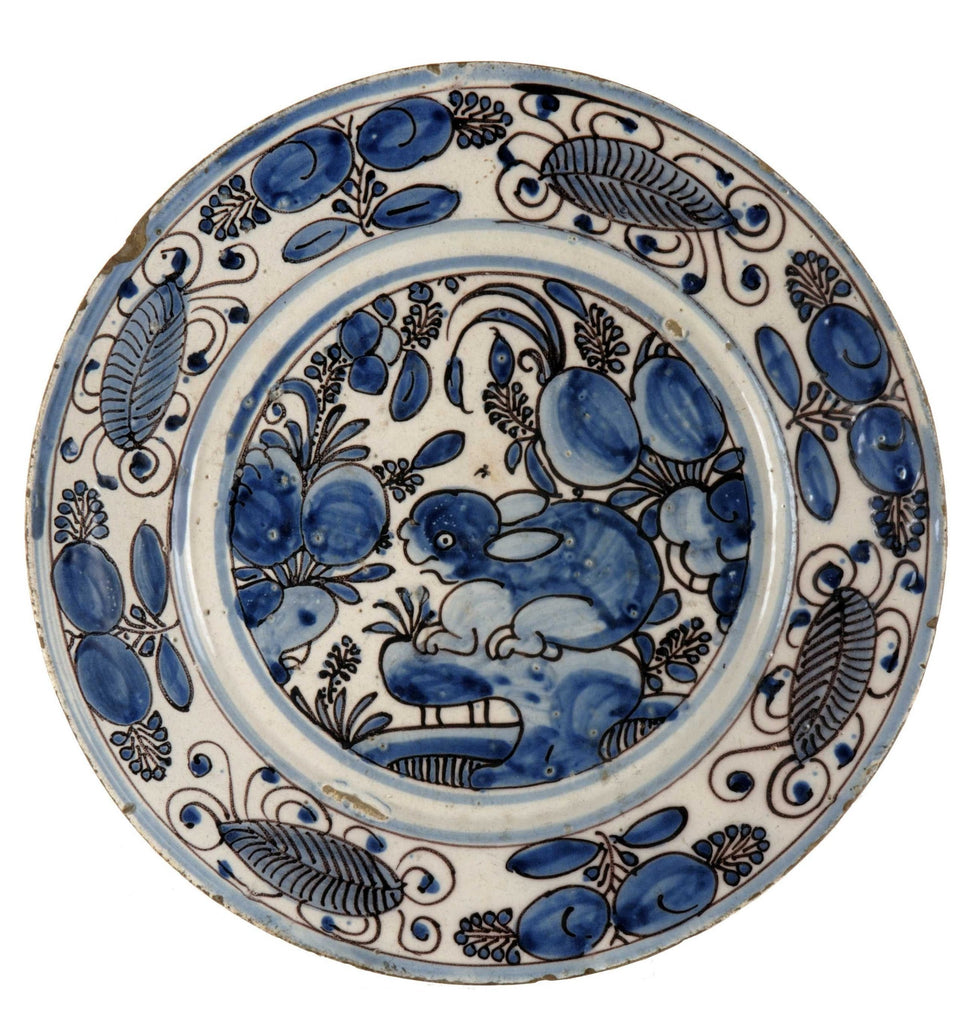The tradition of Coimbra ceramics dates back to the 16th century, showcasing monochrome tones in cobalt blue, complemented by vibrant hues like yellow, green, and ochre. Originating from the Northern Portuguese city of Coimbra, this artistic expression has garnered global acclaim for centuries.
Coimbra: An Ideal Hub for Ceramic Development.
The inaugural pottery factories emerged in close proximity to the banks of the Mondego River, capitalizing on the nearby reservoirs of clay-rich soil. Over time, these manufacturing establishments coalesced around the "Bota Baixo" square, with the primary factories situated along "Rua dos Oleiros," "Rua da Louça," and "Largo das Olarias." Remarkably, the names of these streets endure in the cityscape to this day.

Beyond offering a readily available source of clay, the proximity of the Mondego River played a crucial role in facilitating the transportation of ceramic products to the port of Figueira da Foz.
This proximity streamlined the shipping and sale of the finalized ceramic pieces, enhancing the trade and distribution of Coimbra's distinctive ceramics.
In the 16th century, the "Malegueiros" bring out Coimbra ceramics
The "Malegueiros," named after their roots in the Spanish city of Malaga, were visionary artists who introduced ceramic techniques to the Coimbra region in the 16th century.
During that period, aspiring ceramists had to undergo an examination and excel in a practical test, which included the de-moulding of dishes after the initial firing.
Subsequently, the "judges of the Office" would issue an official letter, authorizing the production and sale of Coimbra ceramics, contingent upon adherence to the profession's regulations and manufacturing standards.
The apogee of Coimbra ceramics in the 17th century
The Malegueiros amassed considerable wealth and even attained titles of nobility. In response, the city council instituted a work permit, a contribution to the city's festivals, and required the renunciation of their privileges.
Consequently, the ceramic industry began to extend to the working class, although specific families like Costa Brioso, Paiva, Vandelli, and Oliveira continued to hold sway over the local earthenware sector. These families remain some of the most renowned in the region.

Ceramic dish from Coimbra - 17th century - Credit Museu Quinta das cruzes
The decline in the 19th and 20th centuries
In the 20th century, Coimbra ceramics experienced substantial industrialization with the establishment of the ESTACO factory, employing over 1,000 individuals, excluding its production unit in Mozambique.

Nevertheless, akin to many facets of the ceramic industry, the ESTACO factory witnessed a decline and ultimately declared bankruptcy in 2001.
Today, the expansive Pedrulha industrial park, sprawling over 60,000 square meters, stands in ruins, characterized by missing roofs, dilapidated walls, and shattered windows.
The revival of artisanal ceramics

Coimbra ceramics continue to occupy a prominent position in the collective imagination, eliciting feelings of attachment, respect, and curiosity. Although rare, artifacts from the 16th, 17th, and 18th centuries remain highly sought after, gracing private collections and auction houses.

The renewed interest in Coimbra ceramics has become a catalyst for skilled artisans to rediscover ancestral manufacturing processes and replicate historical pieces.
Among them, Luisa Paixão stands out, contributing to the renaissance of this art through her choice of a small workshop dedicated to crafting entirely handmade ceramic pieces using 17th-century techniques.

What distinguishes this workshop is the artistic freedom granted to decorators, allowing them to interpret the original 17th-century motifs and thus ensuring each piece is absolutely unique.

ℹ Luisa Paixão aims to contribute to the revival of this artisan craft and has chosen a small workshop that spares no effort in offering ceramic pieces entirely handmade, adhering to 17th-century techniques.
What sets this workshop apart is that decorators are free to interpret the original 17th-century motifs, making each piece absolutely unique."


